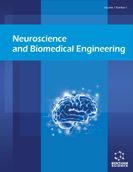Abstract
Background: Stroke is a major contributor to the reduced ability to carry out activities of daily living (ADL) post cerebral infarct. There has been a major focus on understanding and improving rehabilitation interventions in order to target cortical neural plasticity to support recovery of upper limb function. Conventional therapies delivered by therapists have been combined with the application of mechanical and robotic devices to provide controlled and assisted movement of the paretic upper limb. The ability to provide greater levels of intensity and reproducible repetitive task practice through the application of intervention devices are key mechanisms to support rehabilitation efficacy.
Results: This review of literature published in the last decade identified 141 robotic or mechanical devices. These devices have been characterised and assessed by their individual characteristics to provide a review of current trends in rehabilitation device interventions. Correlation of factors identified to promote positive targeted neural plasticity has raised questions over the benefits of expensive robotic devices over simple mechanical ones.
Conclusion: A mechanical device with appropriate functionality to support the promotion of neural plasticity after stroke may provide an effective solution for both patient recovery and to stimulate further research into the use of medical devices in stroke rehabilitation. These findings indicate that a focus on simple, cost effective and efficacious intervention solutions may improve rehabilitation outcomes.
Keywords: Activities of daily living, exercise therapy, paresis, recovery of function, robotics, stroke, upper extremity, mechanical devices, neural plasticity.
Graphical Abstract
 49
49

